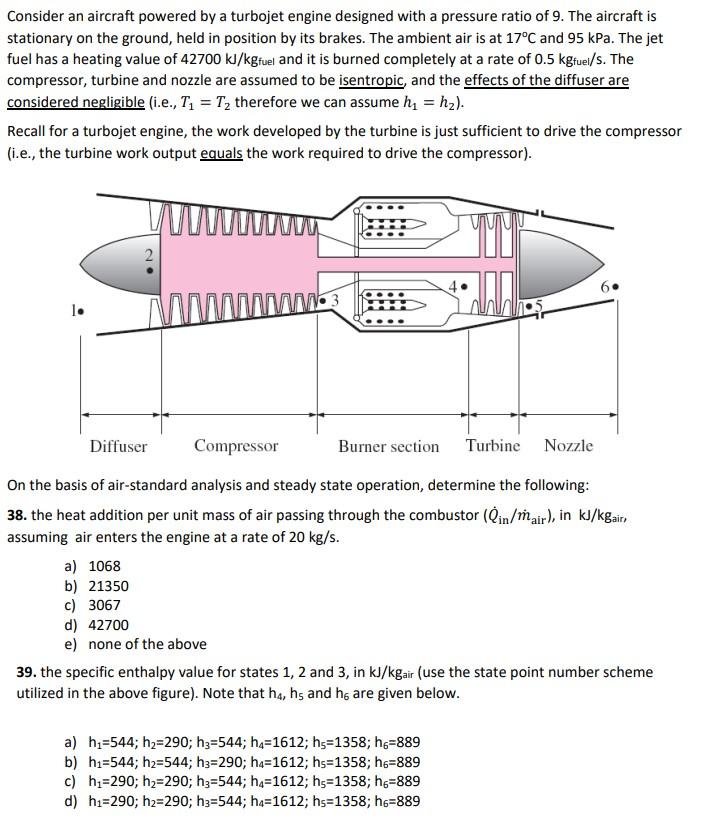Answered step by step
Verified Expert Solution
Question
1 Approved Answer
This is all part of 1 question, please answer it all with steps. Consider an aircraft powered by a turbojet engine designed with a pressure


This is all part of 1 question, please answer it all with steps.
Consider an aircraft powered by a turbojet engine designed with a pressure ratio of 9. The aircraft is stationary on the ground, held in position by its brakes. The ambient air is at 17C and 95 kPa. The jet fuel has a heating value of 42700 kJ/kgfuel and it is burned completely at a rate of 0.5 kgfuel/s. The compressor, turbine and nozzle are assumed to be isentropic, and the effects of the diffuser are considered negligible (i.e., T1 = T, therefore we can assume h = hz). Recall for a turbojet engine, the work developed by the turbine is just sufficient to drive the compressor (i.e., the turbine work output equals the work required to drive the compressor). YM 2 lo W1103 Diffuser Compressor Burner section Turbine Nozzle On the basis of air-standard analysis and steady state operation, determine the following: 38. the heat addition per unit mass of air passing through the combustor (Oin/mair), in kJ/kgair, assuming air enters the engine at a rate of 20 kg/s. a) 1068 b) 21350 c) 3067 d) 42700 e) none of the above 39. the specific enthalpy value for states 1, 2 and 3, in kJ/kgair (use the state point number scheme utilized in the above figure). Note that ha, hs and hs are given below. a) h1=544; h=290; hz=544; ha=1612; hs=1358; h=889 b) hi=544; h2=544; h=290; ha=1612; hs=1358; h=889 c) h1=290; h2=290; h3=544; h=1612; hs=1358; h=889 d) h=290; h2=290; h3=544; ha=1612; hs=1358; h6=889 40. the velocity at the nozzle exit, in m/s, assuming hs and he from question 39. a) 938 b) 969 c) 469 d) 685 e) none of the above 41. the force that must be applied on the brakes to hold the plane stationary, in N, assuming the air mass flowrate is 20 kg/s and the velocity at the nozzle exit is 600 m/s. a) 6,000 b) 12,000 c) 489 d) 19,380 e) none of the aboveStep by Step Solution
There are 3 Steps involved in it
Step: 1

Get Instant Access to Expert-Tailored Solutions
See step-by-step solutions with expert insights and AI powered tools for academic success
Step: 2

Step: 3

Ace Your Homework with AI
Get the answers you need in no time with our AI-driven, step-by-step assistance
Get Started


